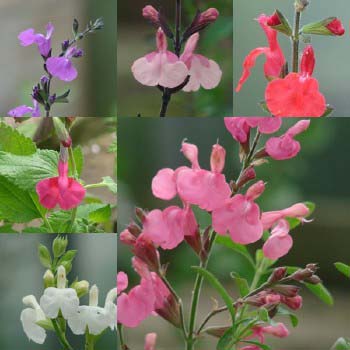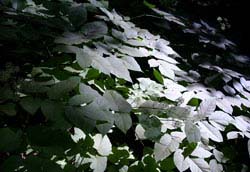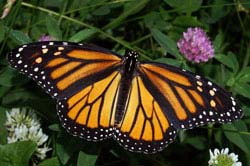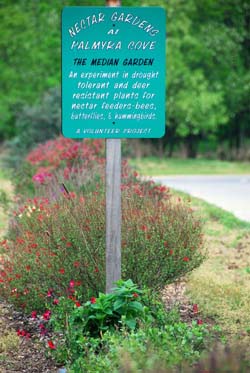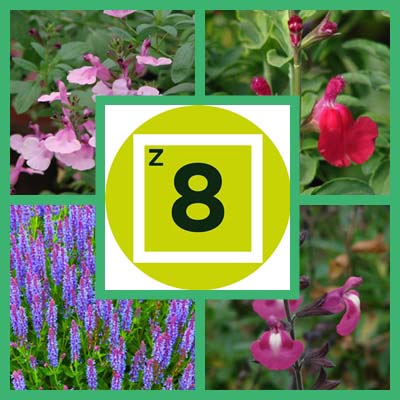(Hot Lips Sage) What a winner for fascinating flowers! Salvia microphylla ‘Hot Lips’ is a native of Mexico that produces a combination of solid red, solid white, and bicolor red and white blossoms all on the same plant and sometimes at the same time. "Sometimes" is a key word in that last sentence, because new owners need to be aware that you can't expect all of these variations at any one time. It may not happen.
Hot Lips Sage has fragrant, mid-green foliage. Its leaves are ribbed and slightly scalloped like those of other types of Salvia microphylla (Mountain Sage), yet the plant is sometimes mistakenly identified as a Salvia greggii (Autumn Sage) or Salvia x jamensis (Jame Sage). Both are closely related to Salvia microphylla (Mountain Sage), but Hot Lips doesn’t have the airy look or tiny, unveined, elliptical leaves of an Autumn Sage and, in general, it is larger than a Jame Sage.
We’ve noticed that the flowers of this heat-tolerant sage bloom more in cooler parts of the growing season. Although it’s a sun lover, Hot Lips can handle partial shade. It’s also drought tolerant and, once well established, adaptable to life in dry gardens. Yet Hot Lips thrives with average supplemental watering based on local rainfall. Similar to most sages, it needs well-drained soil.
Bees, butterflies, and hummingbirds love the rich nectar of this sage, which is a good choice as an accent plant or for massing as a hedge or groundcover.
A wide variety of Mountain Sage grows throughout Mexico. Many sources state that Hot Lips Sage is from Oaxaca, and that is possible. However, the first cuttings of the plant to be propagated commercially in the U.S. came from San Miguel de Allende, which is much further north and is where Pacific Horticulture Editor Emeritus Richard G. Turner obtained them.
In an article for Pacific Horticulture (2004), Turner explained that he got the cuttings in 1999 from a plant owned by friends who lived in the colonial town and had received it as a gift from their housekeeper, Alta Gracia. Where did she get it? Alta Gracia wouldn’t say, but Turner noted that she was a talented gardener known for taking cuttings from plants anywhere they caught her eye, including at gravesites.
Turner gave the cuttings to horticulturist Don Mahoney of San Francisco’s Strybing Arboretum where staff nurtured them into a horticultural hit and gave the plant its enticing name.

